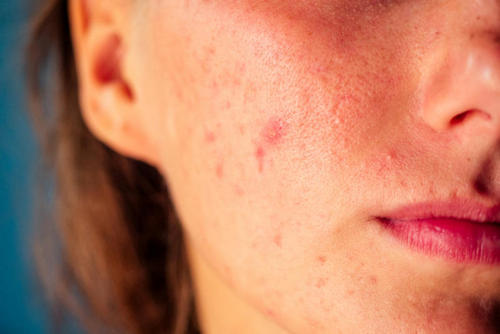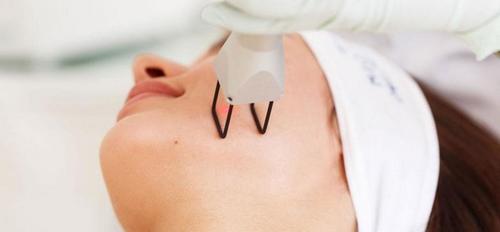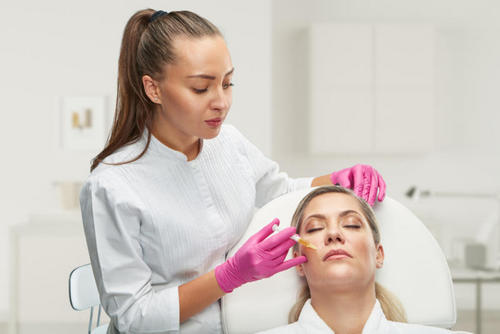Post-acne is the common name for persistent skin changes. They occur when the skin’s ability to recover as a result of a long course of acne is reduced. This happens in adolescence and as a result of incorrect (most often independent) methods of treating acne.
With post-acne, you only need to contact a cosmetologist-dermatologist who works in a licensed clinic, where there are qualified personnel, certified cosmetics and where all sanitary and epidemiological standards are observed.
Serious cosmetic procedures should be performed by a professional doctor with sufficient experience. Some procedures can cause side effects and require rehabilitation (it should be supervised by a doctor).
Many people are looking for doctors for reviews online. I do not trust this, especially when I see continuous enthusiastic comments. This is a reason to beware.
The following symptoms are not related:
- enlarged pores;
- stagnant spots;
- dyschromia (violation of pigmentation);
- uneven skin texture.
How to find a good doctor
The easiest and most popular way to find a doctor, including a beautician, is the advice of friends. But still, the main selection criterion is a personal consultation with a doctor.
During the consultation, pay attention to the location of the clinic, the cleanliness of the office, the appearance of the cosmetologist, the storage conditions of working tools and cosmetic preparations. A diploma of graduation from a medical institute, residency in dermatology and cosmetology is a prerequisite. If you are planning hardware procedures, the doctor must have certificates confirming that he has passed the appropriate training. Ask to show you all the documents listed – you have every right to do so.

Carefully plan your first visit to the doctor, write down your questions, do not hesitate to ask them. The doctor must collect an anamnesis, find out about the individual characteristics of the body, draw up a treatment plan based on the specific problem that you have come up with.
Fractional Photothermolysis
Fractional photothermolysis is the technology of the point impact of laser energy on the surface of the skin, in which tissue is destroyed on the treated area.
There are two types of photo-thymolysis:
- ablative (with the destruction of the basal layer of the epidermis);
- non-ablative (without destruction of the basal layer of the epidermis).
Each of these methods is divided into superficial and deep. Ablative photothermolysis has a lot of contraindications and requires long-term rehabilitation. Non-ablative resurfacing is an effective way of tissue remodeling with minimal rehabilitation periods. The procedure allows you to smooth and smooth the relief, narrow the pores, remove pigmentation, strengthen the skin turgor and enhance its elasticity. After the procedure, there is a pronounced redness of the skin and swelling within two to three days with subsequent peeling. Set aside a week to recover.
The course of procedures is prescribed by the doctor, depending on the severity of the post-acne, usually done once every four weeks – for 2-6 months.
Since the procedure is unpleasant, superficial anesthesia is used – it minimizes discomfort. Keep in mind: at the heart of many anesthetics is usually lidocaine, so if you have an allergy, be sure to warn your doctor about this.
In order to see the desired result from the procedure, you need to remember about the preparatory stage.
You should not sunbathe and visit the solarium for at least two weeks before the procedure. Use sunscreens with maximum protection daily. It is important to exclude the use of photosensitizing medications. These include: antibiotics (the most common reactions to tetracyclines, especially doxycycline and fluoroquinolones), antifungal medications (usually griseofulvin), diuretics, antipsychotics, antidepressants, sleeping pills, cardiotics (like amiodarone), oral contraceptives and even vitamins B2 and B6. the use of local retinoids (ointments and creams based on vitamin A) may be a contraindication for the procedure. In some cases, a cosmetologist may prescribe courspilings to prepare the skin. The optimal time of the year for the procedure is from October to March.

Contraindications:
- diabetes;
- epilepsy;
- the presence of a pacemaker;
- acute inflammatory processes on the skin;
- pregnancy, breastfeeding;
- psoriasis;
- exacerbated chronic diseases;
- herpes virus infection in the acute stage (in the presence of a chronic, often recurring herpes virus infection, start preventive use of acyclovir in three days);
- Tan.
Recommendations after the procedure:
- processing with special ointments and creams based on dexpanthenol (d-panthenol, bepanten) for 2-3 days;
- it is forbidden to visit the bathhouse and sauna for one month;
- it is forbidden to sunbathe strictly for one month, in the next two months during all sun exposure use cream with SPF 50+ and hats with wide brim;
- Do not injure the treatment site with scrubs during the peeling period.
The procedure lasts an hour and a half, the cost varies from 16 thousand to 35 thousand rubles per session (depending on the device and the exposure zone). In many clinics, you will have to pay separately for the anesthetic gel; it costs 1,500-2,500 rubles.
Very often, laser resurfacing is combined with plasmolifting or colloid therapy. They enhance the effect of hardware exposure, but are used as independent methods when working with post-acne.
Plasma lifting
Plasmolifting refers to mesotherapy when a patient’s blood, purified from red blood cells and containing a high percentage of platelets, is injected subcutaneously with a needle. In another way, this procedure is also called autohemotherapy. Subcutaneously introduced platelets activate cell growth and division, stimulate the synthesis of collagen and elastin. The intercellular metabolism is accelerated, the activity of the sebaceous glands is normalized. The main advantage of plasmolifting is the absence of allergies, as this mesococctail consists of your own cells.
How the procedure happens: the doctor or nurse takes blood from a patient from a vein into special tubes and then puts them in a centrifuge, where the blood is separated into red blood cells (red blood cells) and platelet-rich plasma, which will be used. While the blood is unscrewed in a centrifuge, an anesthetic gel is applied to you (remember the allergy to lidocaine!). Then the doctor proceeds to injection. The duration of the session is an average of 30-50 minutes. As with any injection technique, slight bruising is possible.
Preparation for the procedure: take tests for HIV, hepatitis, syphilis. A couple of days before the procedure, stop taking aspirin, refuse alcohol, fatty and spicy foods.
Contraindications:
- menses;
- autoimmune diseases;
- pregnancy, lactation;
- allergic dermatitis;
- inflammatory manifestations on the skin.
Recommendations after the procedure: do not visit the sauna, solarium, pool. Refrain from active sports for three days, it is mandatory to use Sanskrin with a high degree of protection (SPF 50).

The cost varies from 6 thousand to 25 thousand rubles per procedure – depending on the manufacturer of the test tubes and the clinic.
Colloid therapy
Collostotherapy refers to injection methods of recovery, which is based on the introduction of the natural collagen complex “Collost” under the skin.
“Kollost” is a collagen-containing preparation. Its uniqueness lies in the fact that in addition to the functions of the microimplant, it activates the synthesis of its own collagen. Thus, it is possible not only to fill in the deep scars of post-acne from the inside, but also to restore the lost ability to form collagen fibers.
A prerequisite for this procedure is an allergy test two weeks before the procedure (after all, a drug of animal origin). In the absence of negative reactions, the doctor prescribes a course of procedures and gel concentration, depending on the severity of the problem. Before injections, the same application anesthesia is applied, the doctor warms up the syringe in warm water to make the gel easier to inject. The average duration of the session is 30-50 minutes.
Contraindications:
- individual intolerance to components;
- period of exacerbation of chronic diseases;
- poor blood coagulation;
- pregnancy and lactation;
- inflamed skin.
Before the main procedure, we must do an allergy test, do not drink aspirin, alcohol or very spicy food for two days.
Keep in mind: within a day after the procedure, redness, itching and swelling are possible (at the injection site).
The cost varies from 600 to 3,500 rubles per sample and from 8,000 to 20,000 per procedure – depending on the concentration of the drug and the clinic.
IPL therapy or phototherapy
If post-acne is manifested by pronounced congestive spots, dyschromia and couperosis, then IPL therapy is necessary – exposure to a clearly selected spectrum by light radiation.
Light pulses penetrate deep into the dermis without damaging the epidermis, and selectively affect the altered cells of the problem area – they destroy the pigment and glue the dilated vessels, smoothing the skin surface and making it homogeneous. During the procedure, the pH balance of the skin is not disturbed and the protective lipid layer of the dermis is maintained, microcirculation is also enhanced, local immunity is stimulated, the activity of the sebaceous glands is normalized, and the quality of the skin as a whole improves.
How the procedure goes: the doctor treats the skin with an antiseptic, applies a special gel and conducts a series of flashes. The procedure is very bright, so both the patient and the doctor always wear special glasses. The average duration of a session is from 5 to 30 minutes.
Since we are talking about light therapy, the main contraindication here is tanning (do not forget about the seasonality October – April) and increased photosensitivity.
Contraindications also include:
- diabetes;
- epilepsy;
- taking medications that increase photosensitivity;
- recent chemical peeling.
How to prepare for the procedure: for a month, stop sunbathing and cancel photosensitive preparations.
Recommendations after:
- be sure to use creams with SPF protection for one month;
- do not sunbathe for two weeks;
- obligatory hydration for three days;
- Bath, sauna and pool are banned for three days.
The course includes from two to four procedures, a break between each session is three to four weeks. Cost – from 3 thousand to 20 thousand rubles – depending on the impact zone, clinic and apparatus.



